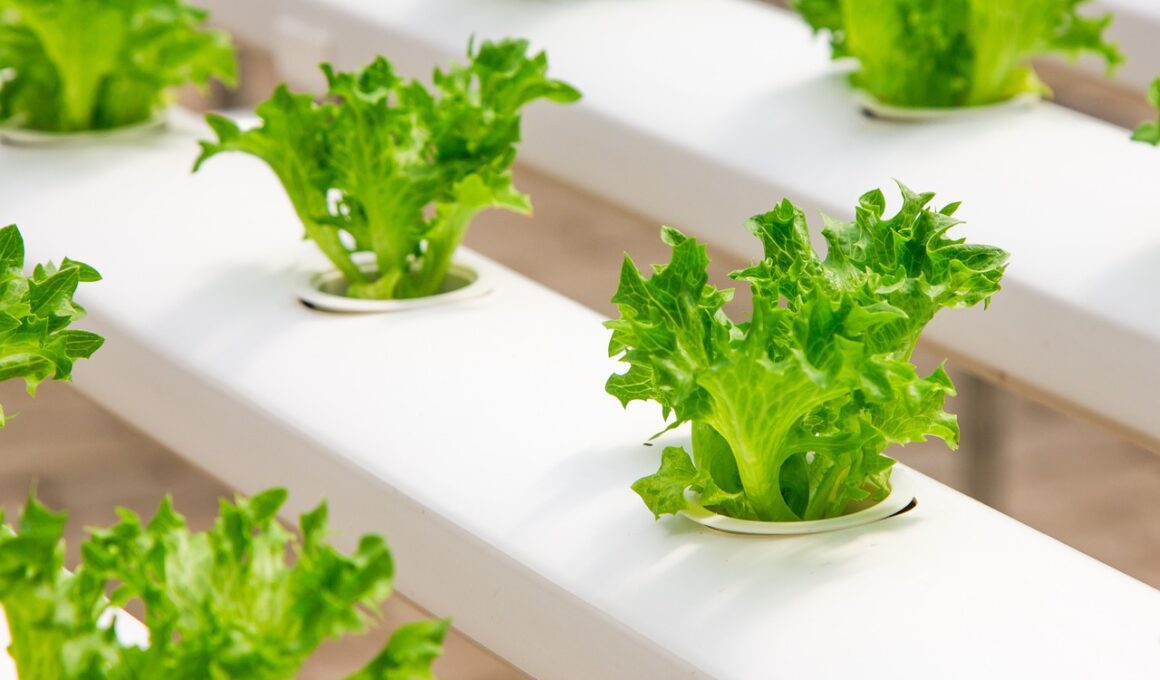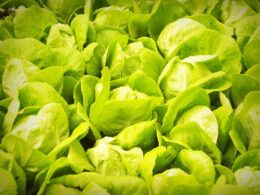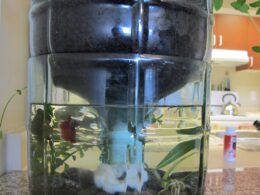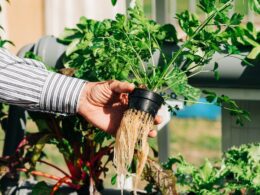Are you tired of investing time and money into hydroponic gardening, only to be met with disappointing results? You’re not alone. Many people struggle with getting their hydroponic systems to thrive, and there are several reasons why.
In this article, we’ll explore some of the common reasons why hydroponic fails and what you can do to avoid them. Hydroponic gardening can be a fantastic way to grow your own fresh produce, but it requires attention to detail and a bit of knowledge to succeed.
Whether you’re a beginner or an experienced grower, there are a few key factors that can make or break your hydroponic setup. By understanding the potential pitfalls and taking steps to address them, you can increase your chances of success and enjoy the benefits of hydroponic gardening.
So, let’s dive in and explore some of the reasons why hydroponic gardening can fail.
Water Quality and Nutrient Imbalances
Maintaining proper water quality and nutrient balance is crucial for successful hydroponic gardening! If you don’t keep your water pH balanced, your plants won’t be able to absorb the nutrients they need.
It’s important to monitor your water’s pH levels regularly and adjust them as necessary. If the pH is too high or too low, it can lead to nutrient imbalances and your plants won’t be as healthy as they should be.
Nutrient absorption is another critical factor in hydroponic gardening. You need to make sure your plants are getting the right nutrients in the right amounts.
If your nutrients are too concentrated, they can burn your plants or cause nutrient lockout. On the other hand, if your nutrients are too weak, your plants won’t grow as well.
It’s important to follow the manufacturer’s instructions and monitor your plants’ health to make sure they’re getting the right nutrients.
In summary, proper water quality and nutrient balance are essential for successful hydroponic gardening. By managing your water’s pH levels and carefully monitoring your nutrient levels, you can help your plants grow strong and healthy.
Remember to keep an eye on your plants’ health and adjust your nutrient levels as needed. With a little bit of care and attention, you can enjoy a thriving hydroponic garden!
Lighting and Temperature Control
Proper lighting and temperature are key factors in ensuring that your plants thrive in a hydroponic system. Without the correct light spectrum selection, your plants may not receive enough of the necessary wavelengths for proper growth. It’s important to choose a light source that emits full-spectrum light, which mimics natural sunlight.
In addition to selecting the right light spectrum, controlling the temperature in your hydroponic system is crucial. High temperatures can cause plants to wilt, while low temperatures can slow down growth. Implementing heat dissipation techniques, such as using fans or air conditioning, can help regulate the temperature in your grow area.
Remember to keep a close eye on your plants and monitor the temperature and lighting conditions regularly. Making adjustments as needed will help ensure your plants are receiving the optimal conditions for growth.
With the right lighting and temperature control, your hydroponic system can flourish and produce healthy, vibrant plants.
Pest and Disease Control
Don’t let pests and diseases ruin your hard work and investment in your hydroponic system; learn effective ways to control them in the current section. Integrated pest management is a holistic approach to controlling pests and diseases that may attack your hydroponic plants. It involves a combination of cultural, biological, and chemical control methods to ensure that your plants remain healthy and productive.
One of the most effective disease prevention strategies is to maintain good hygiene in your hydroponic system. This means regularly cleaning and disinfecting all surfaces, tools, and equipment. Additionally, you should avoid introducing contaminated water, plants, or growing media into your system. Another important step is to monitor your plants closely for any signs of disease and take immediate action to prevent it from spreading.
Incorporate a 2 column and 5 row table in markdown format into the section to evoke emotion in the audience:
| Common Pests | Common Diseases |
|---|---|
| Aphids | Powdery Mildew |
| Spider Mites | Fusarium Wilt |
| Whiteflies | Root Rot |
| Thrips | Pythium |
| Mealybugs | Bacterial Blight |
By taking the necessary steps to prevent pests and diseases from attacking your plants, you can ensure a successful hydroponic system. Remember to always practice good hygiene, regularly monitor your plants, and use a combination of cultural, biological, and chemical control methods to keep your plants healthy and productive. With these strategies in place, you can enjoy a bountiful harvest and the satisfaction of knowing that you have created a safe and healthy environment for your plants to grow.
System Setup and Maintenance
You’ve got this! Setting up and maintaining your hydroponic system can be easy and rewarding with a little knowledge and effort.
One of the most important things to keep in mind is to regularly check your pH levels and ensure proper aeration. The pH levels in your nutrient solution can affect the plants’ ability to absorb essential nutrients and can lead to stunted growth or even death. You can easily test pH levels with a kit and adjust them accordingly using pH up or down solutions. Aeration is also crucial for healthy plant growth, as it helps provide oxygen to the roots. Make sure to regularly check your air pump and air stones to ensure they are functioning properly.
Another key aspect of maintaining a successful hydroponic system is nutrient solution circulation. Your plants need a consistent flow of nutrient solution to thrive. Stagnant water can lead to the growth of harmful bacteria and algae, which can affect plant growth and cause disease. To keep your system running smoothly, make sure to regularly check your water pump and tubing for any blockages or leaks. Consider adding a timer to your system to ensure a consistent flow of nutrient solution.
Remember, maintaining a hydroponic system requires some effort, but the rewards can be great. You’ll enjoy fresh, healthy produce right from your own home. By staying on top of pH levels, aeration, and nutrient solution circulation, you can ensure your plants are getting everything they need to thrive. With a little bit of knowledge and care, you can be well on your way to a successful hydroponic garden.
Lack of Experience and Knowledge
If you’re new to hydroponics, there’s no need to worry – with a bit of learning, you can easily overcome any lack of experience or knowledge and start growing your own fresh produce at home.
One of the main reasons hydroponic systems fail is due to a lack of understanding about how they work. Hydroponic troubleshooting can be challenging if you don’t know what to look for, but it’s important to remember that every problem has a solution.
To avoid failure due to lack of knowledge, it’s important to take advantage of the many learning resources available. There are countless online forums, articles, and videos that can help you understand the basics of hydroponic gardening. You can also attend workshops or classes offered by local gardening centers or universities.
By investing time in educating yourself, you’ll be better equipped to troubleshoot any issues that may arise.
In summary, while hydroponic gardening may seem daunting at first, it’s important to remember that with a bit of learning and troubleshooting, you can successfully grow your own fresh produce. Don’t be discouraged by any initial setbacks, and take advantage of the many resources available to you. With practice, you’ll soon be on your way to a thriving hydroponic system.
Frequently Asked Questions
What are the most common mistakes people make when starting a hydroponic system?
When starting a hydroponic system, it’s important to avoid common mistakes that can cause problems down the line.
One of the most common mistakes is not properly troubleshooting the system before starting. You should make sure all of the equipment is working properly and that the pH levels and nutrient levels are correct.
Another mistake is not providing enough light for the plants to grow. Make sure you have enough light and that it’s at the right distance from the plants.
Finally, it’s important to keep the system clean and free of any debris or pests.
By avoiding these common mistakes, you can set yourself up for success in your hydroponic gardening journey.
Can I use regular tap water in my hydroponic system?
Are you considering using regular tap water in your hydroponic system? While it may seem like a convenient option, water quality and pH levels are critically important in hydroponic systems.
Tap water can contain harmful chemicals like chlorine and fluorine, which can negatively affect the growth of your plants. Additionally, tap water may have a pH level that is too high or too low, which can also harm your plants.
Alternatives to tap water include using filtered or distilled water, or adding pH-balancing chemicals to adjust the water’s acidity. Ultimately, investing in high-quality water for your hydroponic system will help ensure the safety and success of your plants.
How often should I change the nutrient solution in my hydroponic system?
To keep your hydroponic system running smoothly, you should change the nutrient solution regularly. Optimal nutrient levels are crucial for your plants’ growth and health, so keep an eye out for signs of nutrient depletion like yellowing leaves or stunted growth.
Changing the solution every 1-2 weeks is a good rule of thumb, but you may need to adjust this based on the size of your system and the types of plants you’re growing. Don’t wait until your plants are struggling to change the solution – staying on top of this task will help prevent issues and keep your plants thriving.
What types of plants are best suited for hydroponic growing?
If you’re thinking about starting a hydroponic garden, it’s important to choose plants that are best suited for this type of growing. Indoor plants tend to do well in hydroponic systems, as they don’t require as much space or sunlight as outdoor plants.
Additionally, plants with lower nutrient requirements, such as lettuce and herbs, are great candidates for hydroponic growing. When choosing plants, it’s important to consider their nutrient needs and choose a nutrient solution that will provide them with everything they need to grow and thrive.
By selecting the right plants and providing them with the right nutrients, you can set yourself up for a successful hydroponic garden.
Are there any environmental factors that can affect the success of a hydroponic system?
To ensure success in your hydroponic system, it’s important to pay attention to environmental factors such as water quality and temperature control.
Poor water quality can lead to the buildup of harmful chemicals and bacteria, which can negatively impact plant growth. It’s essential to regularly monitor and adjust the pH levels and nutrient levels in your water.
Temperature control is also crucial, as extreme temperatures can stress or even kill your plants. Be sure to maintain a consistent and appropriate temperature range for your specific plants.
By keeping a close eye on these environmental factors, you can increase the likelihood of a thriving hydroponic system.
Conclusion
So there you have it, the reasons why hydroponic systems fail. It all boils down to four main factors: water quality and nutrient imbalances, lighting and temperature control, pest and disease control, and system setup and maintenance.
Even if you have all these factors under control, lack of experience and knowledge can still lead to failure. But don’t let these reasons discourage you from trying hydroponics.
With enough research, preparation, and practice, you can definitely succeed in growing your own plants hydroponically. Just remember to always be vigilant in monitoring your system and addressing any issues that may arise.
Good luck and happy growing!









